How Lesbian Potlucks Nourished the LGBTQ Movement
Now a queer stereotype, the lesbian potluck has radical roots.
Jen Martin and Liz Alpern lived in “that house.” Many queer friend groups have one. It’s the kind of place where a pot of soup is always boiling, where bread is always in the oven, where someone is always willing to read your tarot cards. Friends stopped to visit the Brooklyn apartment on weeknights. It was a space to cook and eat, to work and relax.
For years, Alpern, a chef, had contemplated expanding her house’s welcoming vibe into a formal event, a soup night that would promote queer chefs. After the 2016 presidential election, as Alpern wondered how to support swelling social justice movements, she thought: Why not turn her soup idea into a fundraiser? The first event—a donate-what-you-can dinner—happened the night after the 2017 Women’s March. Protestors returned to New York from D.C. with sore feet and crumpled banners. Exhausted but still revved up, they piled into a local cafe for soup and community. The love, says Kathleen Cunningham, a Queer Soup Night organizer along with Martin and Alpern, was palpable. Yet friends kept asking: What kind of soup could they bring to the potluck?
“We have this joke in Queer Soup Night land: that we’re not a potluck,” Alpern says. But it’s no wonder the trios’ friends were expecting collective cooking. Potlucks have been a hallmark of queer women’s spaces since the 1950s, when the Daughters of Bilitis, the U.S.’s first modern lesbian organization, began meeting in secret over coffee in San Francisco. Nowadays, the potluck is synonymous with lesbian tradition—so ubiquitous that lesbians have been known to potluck everything from protests to sex parties.

Yet the humble potluck has a radical history. From secret ‘50s meetups to ‘70s separatist communes, shared cooking and eating has long nourished the lesbian movement. “The potluck epitomizes the idea of how much more you can have when you grow together,” says Karla Jay, a Professor Emerita at Pace University and a pioneering lesbian activist. “That’s for me the essence of political togetherness.” Born of economic necessity and nurtured in political struggle, lesbian potlucks fed a vision of a more equal world.
To understand how the shared meal became lesbian canon, we have to return to a time before marriage equality and Ellen, before even Stonewall, to a small house in San Francisco. In 1955, Del Martin and Phyllis Lyon, a couple who had been living together since 1953, asked a pivotal question: Where are all the lesbians? There were plenty of gay people in 1950s San Francisco. They had migrated to the city in droves after the War, leaving Midwestern towns or the battlefields of Europe to seek community and freedom. The emerging gay and lesbian establishments of the city’s North Beach neighborhood, such as The Paper Doll and The Tin Angel, were full of them.
Yet the bar scene was often the target of police violence, and was largely dominated by gay men. With more access to money and public space than their lesbian counterparts, gay men, while still in danger of homophobic violence, could dance, sweat, and cruise more freely. Lesbians, meanwhile, struggled under the dual burden of sexism and homophobia. They made less money than their male counterparts, and were subject to specific kinds of sexual harassment and violence. Those who were mothers, married or divorced, risked losing custody of their children. Martin and Lyon decided that if they couldn’t find lesbians in the gay bar scene, they would create a lesbian space for themselves.
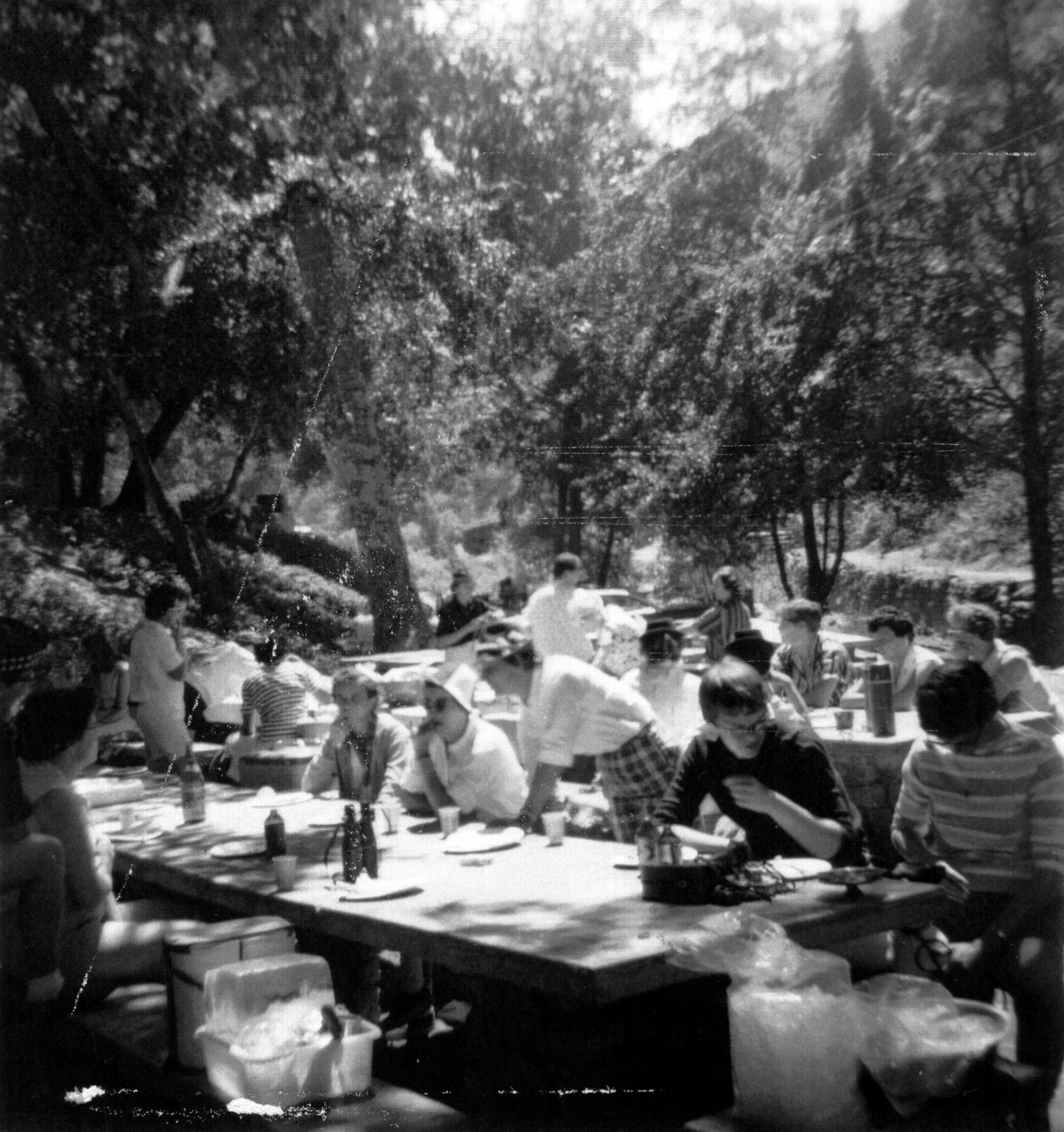
Their first meeting, in September 1955, was simple enough: a dinner between four couples in a friend’s home. But Martin and Lyon had tapped into a collective craving. Within five years, chapters of the group had sprung up from San Diego to Chicago, New Orleans to New York. They called themselves the Daughters of Bilitis.
One of their signature events was called Gab ‘n Java, and it was exactly what it sounds like. Women came together over coffee and cake, sharing what they could. These meetings, while less overtly political than later lesbian activism, did something amazing: In an era where being out could lead to serious legal and social consequences, they helped American lesbians realize their collective strength. Soon, the meetings included more extensive offerings—salads and quiches, booze and baked goods. “Some women were very accomplished, some women were struggling,” says Marcia Gallo, a professor at the University of Nevada who wrote a history of the DoB. “Many of them felt like they were the only ones.” But at Daughters of Bilitis meetings, they were together.
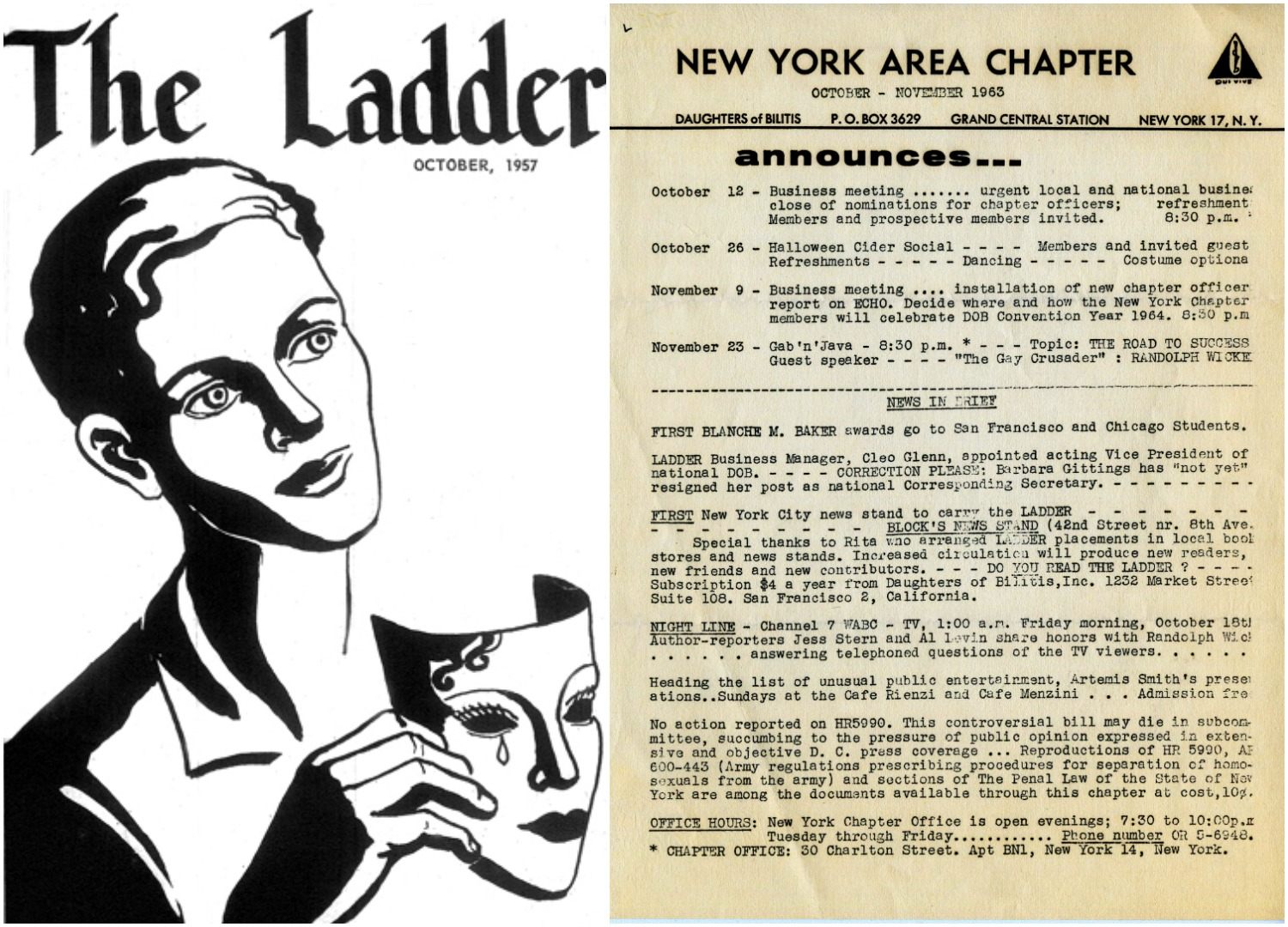
Bolstered by groups such as the DoB, the gay movement grew quickly. By the late ‘60s, radical developments were brewing. Students across America protested the Vietnam War. Black Americans marched and were jailed for freedom. Women demanding equal pay and the right to abortion took to the streets. The Daughters of Bilitis, by then a national network with its own magazine, was still going strong, but was split between those who wanted to be more politically active and those who did not. A new, more radical generation of lesbians was coming up.
Karla Jay was part of that new generation. In the early 1960s, she became involved in student activism at Columbia University’s Barnard College. When more than 1,000 student protestors rose up against the University’s proposed gentrification of nearby Harlem in 1968, occupying five buildings and taking the Dean hostage, Jay was among them. But there was something wrong with the leftist student movement. While activists claimed to be against violence, many men in radical circles retained sexist expectations: Men would make the revolution; women would make the coffee. At the same time, women’s liberation activists, such as feminist Betty Friedan, saw lesbian visibility as a threat to the respectability of the feminist movement.
Stonewall changed everything. In 1969, a group of queers, led by trans women of color, fought back against police harassment at the Stonewall Inn in New York’s Greenwich Village, effectively launching the modern LGBTQ movement. So when Friedan referred to lesbians as a “lavender menace” haunting women’s liberation, Jay and other young lesbians sprung into action. Dubbing themselves the Lavender Menace, they staged a protest inside the 1970 Second Conference to Unite Women, where they distributed a statement declaring a new, militant politics. Like the opening shots in a war, it started with a resounding declaration: “A lesbian is the rage of all women condensed to the point of explosion.” The U.S. lesbian movement had begun to combust.
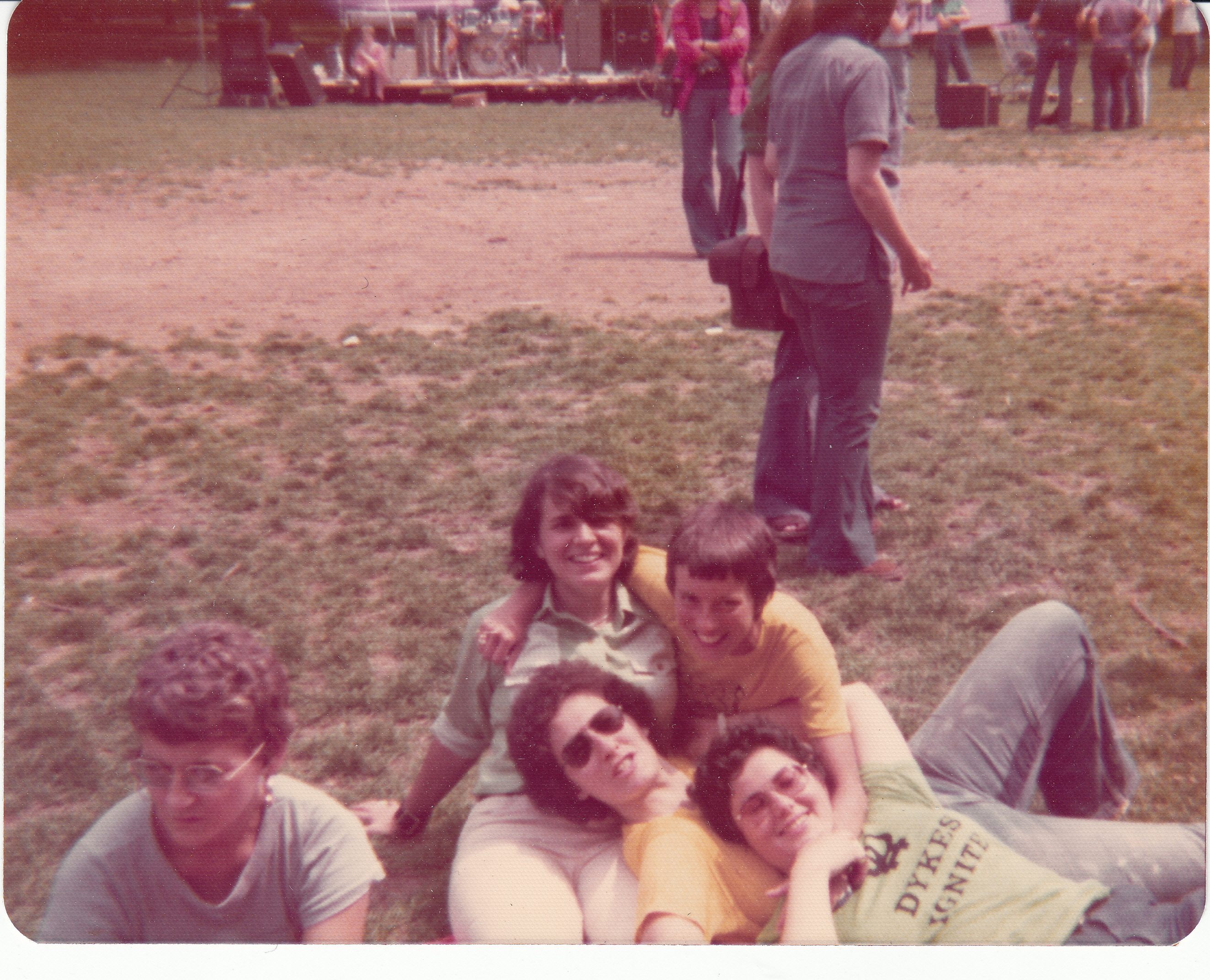
Around that time, Jay was living with roommates in a rent-controlled Manhattan apartment. Money was tight; dinner was tuna casserole or spaghetti in powdered sauce. Jay and other lesbians, most of them balancing activism with low-wage jobs, found that both politically and culinarily, they had more if they banded together.
Women across the country had similar experiences. Fleeing intolerant families and stifling small towns, lesbians flocked to cities. They met each other at bustling bars, in universities, and in the newly formed community publications of the gay liberation movement. In these corners of the world—in dive bars or low-rent apartments that had, just a few years before, been immigrant tenements—lesbians were not alone anymore. They met to flirt and plan protests over shared food. Gallo, who became involved in lesbian politics as an ACLU organizer in 1978 San Francisco, sums up the experience simply: “I had died and gone to heaven.”
Potlucks’ radicalness extended to the menus. Now, lentil stews and tofu bakes are stereotypical “lesbian” food, the punchline of community jokes. But in the ‘60s and ‘70s, these dishes represented new ways of thinking about power, violence, and equality. For many lesbians, the rejection of meat was practical: Women simply couldn’t afford it. But refusing to eat animals was also deeply political. Since women’s suffrage, Western feminists have valorized political vegetarianism. Some lesbians, particularly ecofeminists, took this a step further, equating animal slaughter and destructive agriculture with patriarchal abuse. For Jay, who came of age amid the violence of the Vietnam War, vegetarianism had a specific urgency. “I felt that I couldn’t participate in killing at any level,” she says.
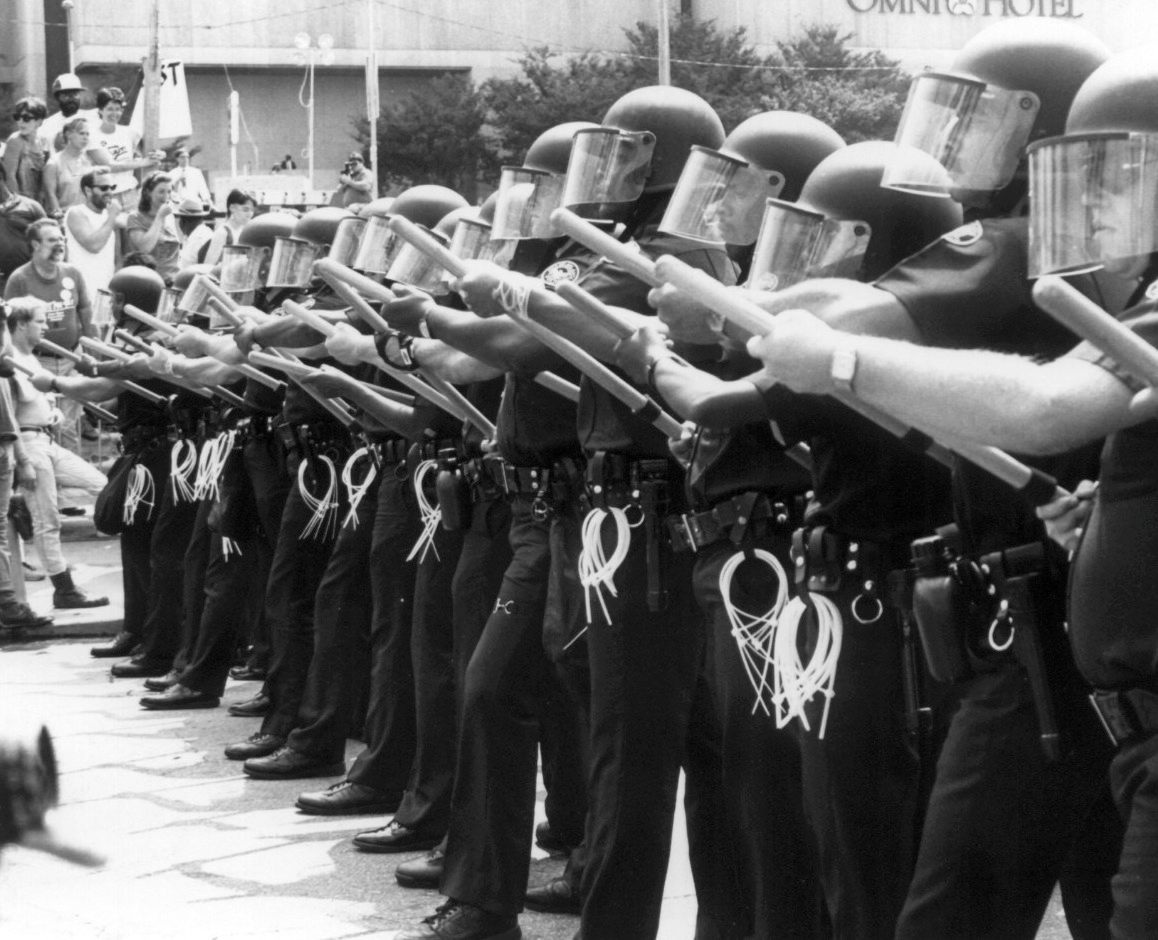
These beliefs led to culinary experimentation. White lesbians, many of whom grew up on standard Middle-American fare, began using ingredients outside their culinary repertoires: tofu, brown rice, hummus. Meanwhile, women rejected processed foods, boycotting brands engaged in corporate practices they viewed as harmful to women and workers. Some lesbians—conscious of the sexist expectation that women cook for their families—declined to cook altogether.
Despite these radical aspirations, however, many potlucks remained racially segregated. “These were gatherings almost entirely of white lesbians,” says Sue Hyde, an activist formerly with the National LGBTQ Task Force, about the potlucks she frequented in 1970s St. Louis.* Absent more affirmative efforts to create communities where lesbians of color would feel safe and welcome, white lesbian spaces often perpetuated the racial inequalities of the outside world. These tensions were coded into food. Bonnie Morris, a woman’s history professor, applied to live in a collective house of mostly white, Protestant lesbians, but decided against joining after she saw a list of what the members considered staple food. “It was bran flour and black strap molasses,” says Morris, nothing that she recognized from her own Jewish upbringing.
Food politics are culturally specific; what is radical for one cultural group may be banal for another. By pushing a highly ideological veganism, some white lesbians made spaces exclusionary to women of color, by stigmatizing dietary practices important to their cuisines.
The exclusionary undertones of some queer vegan cultural spaces have proven stubbornly persistent. Lani Sol, founder of the queer vegan of color group Queer, Vegan, and Melanated, didn’t see her experience reflected in either white queer vegan spaces or predominantly straight, people-of-color vegan spaces. When she organized the first Queer, Vegan, And Melanated Meetup in 2017, she says, “There was a sense of relief.” Participants shared experiences of balancing their connections to cultural and family traditions, which may include animal products, with their own commitment to a plant-based diet. Unlike stereotypical white American vegan cuisine, she says, “We wanted our cultures represented in our foods.”
Sol’s group is part of a long history of queer people of color claiming cultural and culinary space for themselves. In 1980, Black lesbian feminists Audre Lorde, Barbara Smith, and their collaborators founded Kitchen Table: Women of Color Press. With an image of shared food at its very center, the Press would go on to publish some of the most epochal works of women of color feminism. “We chose our name because the kitchen is the center of the home, the place where women in particular work and communicate with each other,” Smith wrote in 1989.
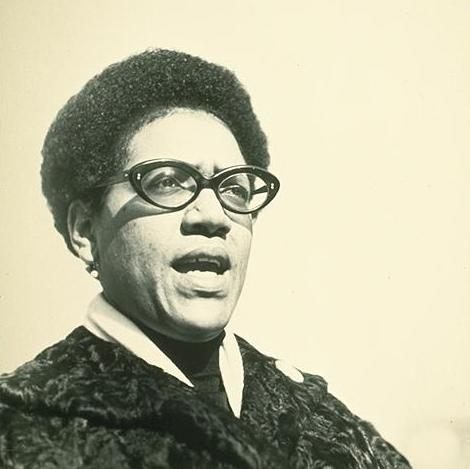
These ideological struggles over food earned “lesbian cuisine” a reputation as dour and overly politicized. Gay men’s cookbooks were full of sensuous recipes—with ingredients they, on the whole higher-income than their lesbian counterparts, could afford—for staples like “crab lorraine, quiche, white wine, and anything baked in pastry,” says Morris. But lesbian cuisine, like lesbians themselves, was stereotyped as austere.
Yet lesbian food, too, could be sensual, even bawdy. Morris recalls the nude shots in pioneering lesbian erotic magazines such as On Our Backs, whipped cream covering bare flesh lush with pleasure. She recalls a musician asking audience members at a lesbian music festival to raise their hands if they were “vagitarians.” She recalls couples eating together on lesbian-only vacation cruises—flirting over wine, making sexy jokes over dessert. Away from homophobic public space, lovers could enjoy their food, and luxuriate in each other.
As some lesbians were sharing grocery lists in urban housing collectives, others turned to agriculture. From Oregon to the Ozarks, women pooled their resources to purchase rural plots. While these “land dyke” collectives had different rules and structures, they shared common commitments to collaboration and a harmonious relationship with the environment.
Mel Braman, now a staff member at the National LGBTQ Task Force, moved to the Ozarks with her girlfriend in 1985. At the time, Braman identified as a lesbian separatist, a stance she would maintain until the AIDs crisis. She had seen the brutality of patriarchal violence while working at a shelter for abused women, and she wanted nothing to do with it. So she and her partner borrowed money and bought a parcel of land. They built a 12 by 12 foot cabin, ate vegetables from their own garden, and received milk every Thursday from Queen, their neighbors’ cow. Braman remembers driving slowly with their weekly haul, hoping the bumps in the dirt road wouldn’t mix the precious cream into the milk.
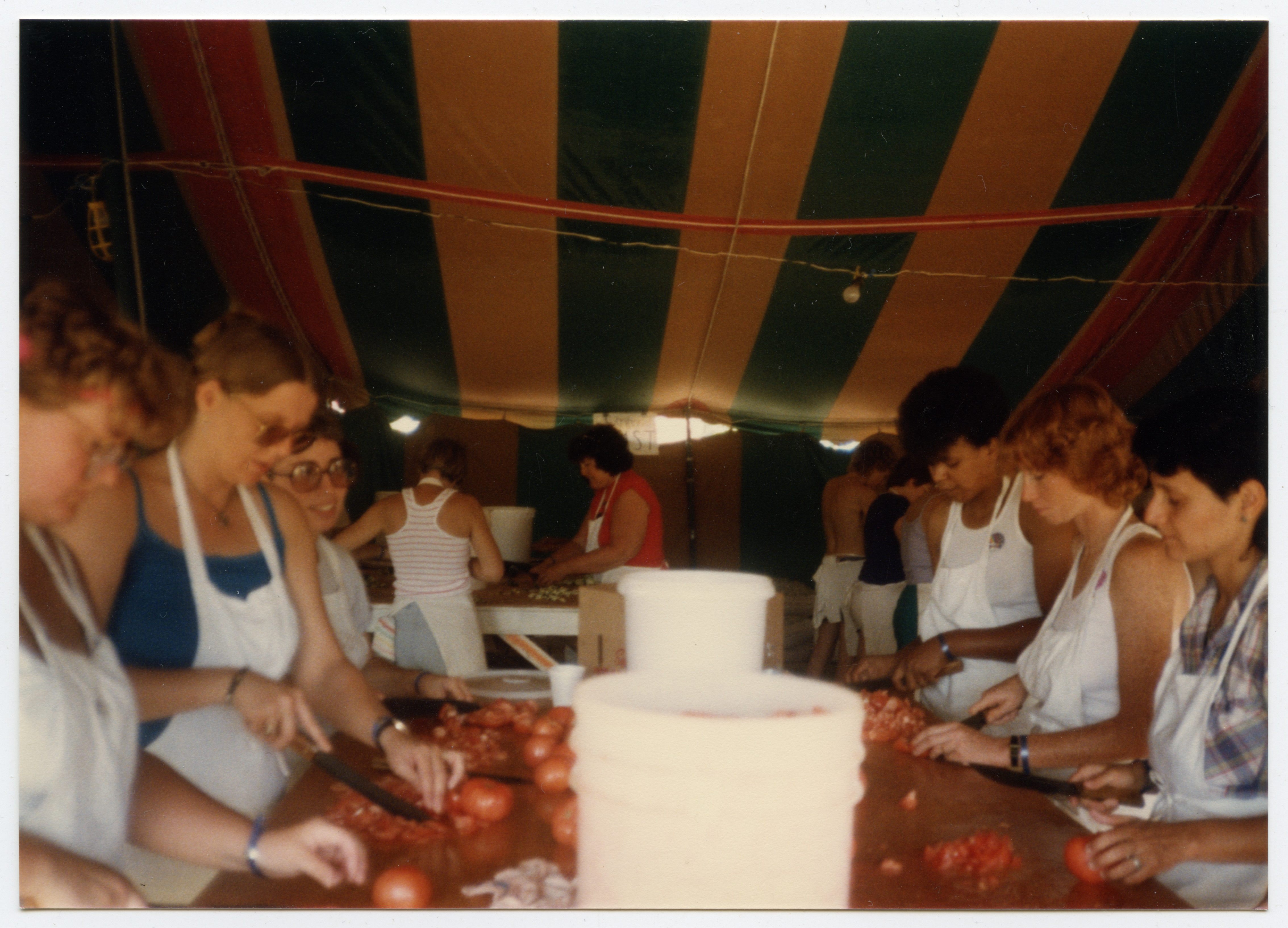
Women who couldn’t move to the country had a short-term alternative: music festivals. Growing out of the womyn’s music circuit—the name a euphemism for music by lesbian artists; the spelling a political decision—festivals were day- or week-long events. In recent years, some festivals’ historic exclusion of transgender women has been widely criticized by LGBTQ and feminist activists. But for Morris, who worked at the Michigan Womyn’s Music Festival for 30 years, these festivals created a much-need community space.
Feeding thousands of campers was a feat. The Michigan Womyn’s Music Festival, which most years hosted more than 3,500 women‚ featured giant cooking tents, where attendees chopped hundreds of pounds of produce for mostly vegetarian fare. One recipe for Nut Loaf, a famous (or infamous) vegetarian meatloaf, called for 275 pounds of yams, 300 pounds of spanish onions, 10 pounds of garlic, and 250 pounds of shredded cheddar cheese—for one evening meal.
Health-conscious vegetarian festival food inspired a child-like delight in contraband. As a 20 year old at the Michigan Festival, Morris slow-danced with a woman in the hopes that her flame would share her mint M&M’s. It was the first time she held another woman close to music. In later years, Morris would smuggle Pop Tarts into the campgrounds, saving the sugary cakes to eat after long days of labor. “Do you want a Pop Tart, honey?” was one of Morris’s favorite pickup lines. It was irresistible.
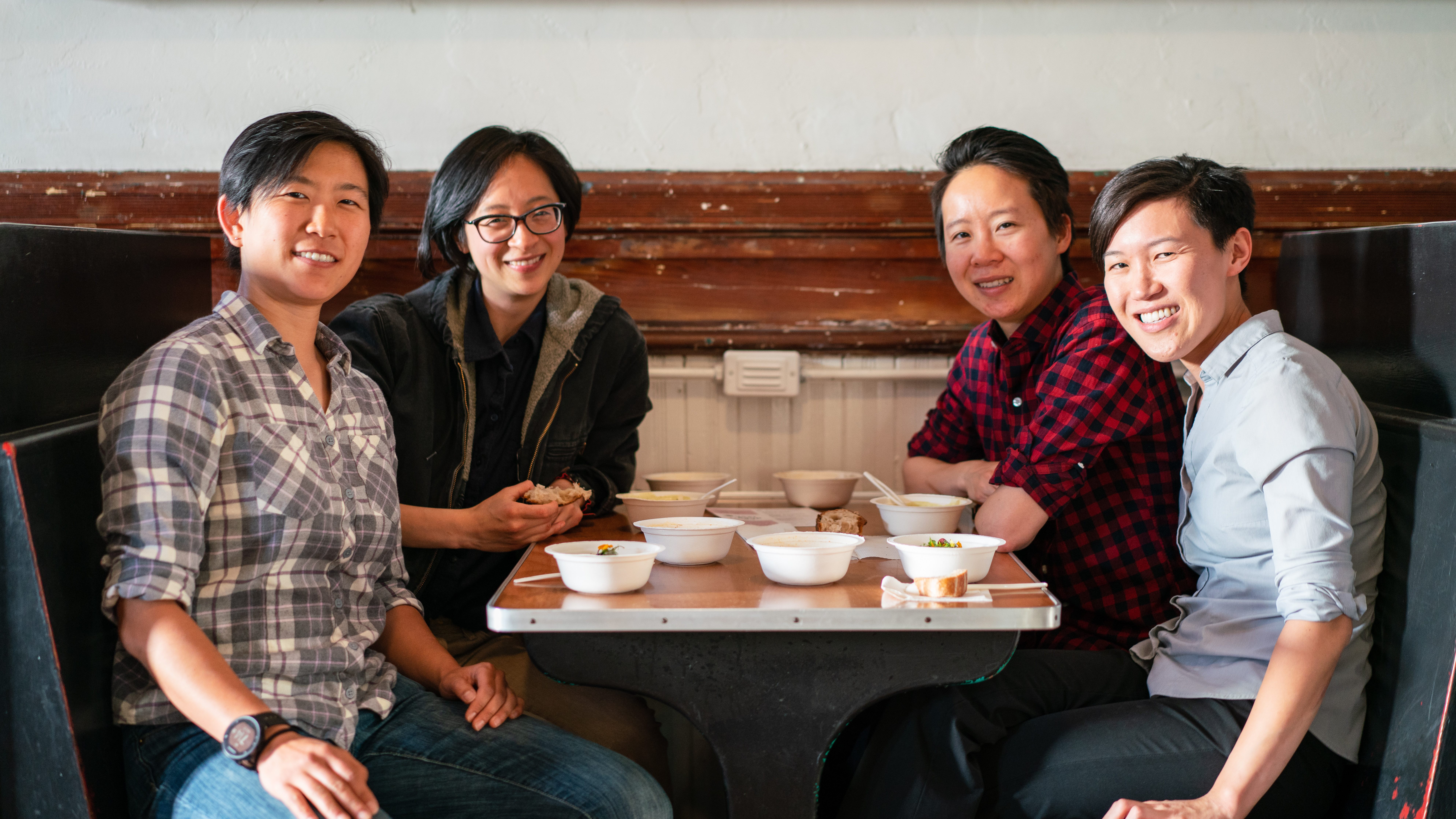
At a recent Queer Soup Night, the same feeling of playful togetherness animates the atmosphere in a small restaurant in Brooklyn. Light glints from a disco ball, playing dappled patterns over attendees’ skin. For many guests, the warm, dinner-party atmosphere is a welcome change of pace from the boozy fog of gay bars. But sobriety doesn’t prevent the play of glances over soft focaccia and creamy, lemon-bright cauliflower soup.
Alpern, Martin, and Cunningham are on their feet, chatting with guests, handling logistics, and roping in friends to work the door. Alpern may joke that Queer Soup Night is not a potluck—and admittedly, the professional chefs’ soups are better than most buffet fare—but shared labor lends the feeling of a potluck to the event. It’s no coincidence that this space, while mixed-gender, is filled with queer women. If the labor of cooking, cleaning, and loving—inculcated in women by traditional gender roles—continues to hold us back, it is also a superpower. The beauty of potlucks and soup nights alike, says Martin, is precisely in this reclamation. “It’s finding value in things that people have told us aren’t valuable,” she says.
In the warmth and bustle of Queer Soup Night, it is easy to imagine the women who came before us. To San Francisco in 1950; to New York in 1960; to St. Louis in 1975. They came animated by the suspicion that they were not alone; that somewhere, others loved like they did. Those first lesbian potlucks—the arguments over politics; the humble tables laden with lentils; the couples holding each other without shame or fear—must have felt like a revelation. Evidence that the love we crave is not only possible, but nourishing. That the life we longed for is ours, and more delicious than we ever could have imagined.
*Correction: A previous version of the article stated that Sue Hyde is an activist with the National LGBTQ Task Force. In fact, she no longer works there.
Gastro Obscura covers the world’s most wondrous food and drink.
Sign up for our email, delivered twice a week.



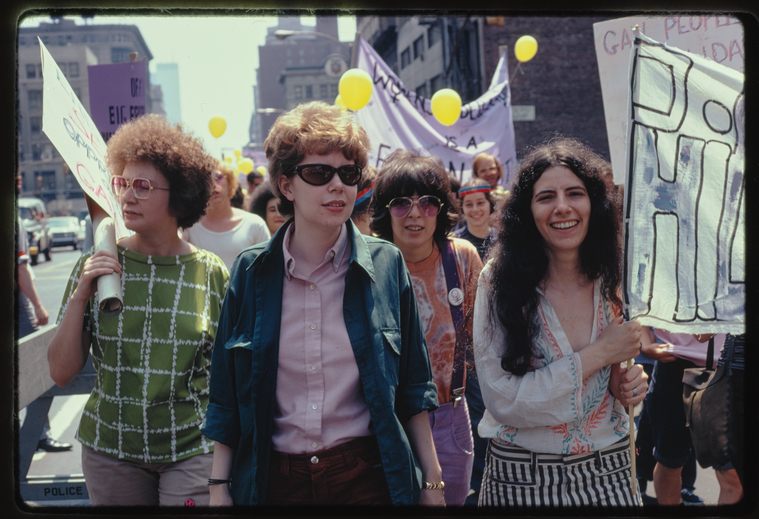




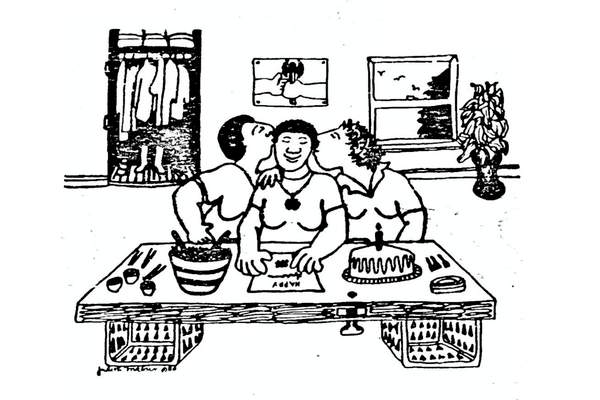


















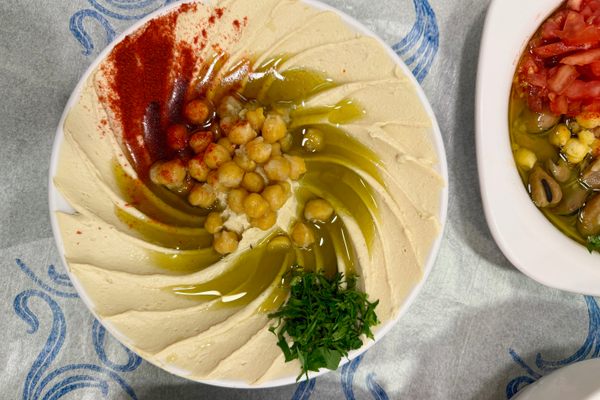






Follow us on Twitter to get the latest on the world's hidden wonders.
Like us on Facebook to get the latest on the world's hidden wonders.
Follow us on Twitter Like us on Facebook